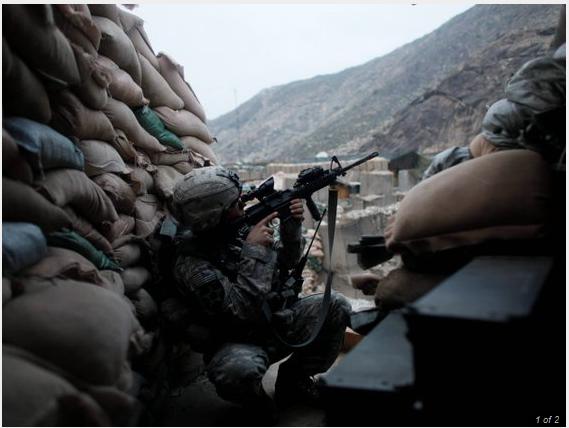Terrain Problems and Combat Outposts in Afghanistan
BY Herschel SmithDo you recall our coverage of the Battle of Wanat? In our several articles on the subject (And specifically, Analysis of the Battle of Wanat), we have had reader / commenter Slab state:
Herschel,
I don’t think your comparisons to Anbar and Helmand Provinces really bear out. I’ve been to Kunar Province, and in the vicinity of Wanat. The terrain is vastly different. The terrain in Helmand allowed the MEU to employ a completely different approach.Also, I don’t really think your points on ROE are particularly germane to the discussion of Wanat. If the platoon had engaged those personnel, I don’t believe it would have changed the outcome of the battle one bit. Positive identification is as difficult as it is critical in a counterinsurgency environment. I can think of numerous instances where I thought someone was an enemy combatant, when in fact they were not.
Where I think you hit the nail on the head is when you mention the terrain. The platoon in Wanat sacrificed control of the key terrain in the area in order to locate closer to the population. This was a significant risk, and I don’t see any indication that they attempted to sufficiently mitigate that risk. I can empathize a little bit – I was the first Marine on deck at Camp Blessing back when it was still Firebase Catamount, in late 2003. I took responsibility for the camp’s security from a platoon from the 10th Mountain Div, and established a perimeter defense around it. Looking back, I don’t think I adequately controlled the key terrain around the camp. The platoon that replaced me took some steps to correct that, and I think it played a significant role when they were attacked on March 22nd of 2004. COIN theorists love to say that the population is the key terrain, but I think Wanat shows that ignoring the existing natural terrain in favor of the population is a risky proposition, especially in Afghanistan.
The application of the ROE discussion has taken a different turn, and my point may be correct. But Slab’s point is still valid, and our discussion of the Battle of Kamdesh bears out the point about terrain (see also Video of COP Keating). Now comes a picture via The Washington Times.
Sgt. David Nix aims toward the hills as incoming fire hits inside Command Outpost Michigan in Kunar province
Two questions. Can someone tell me when Combat Outposts became “Command Outposts?” Why the name change and what does it mean? Second, exactly why is this COP located on low terrain? Given the lessons we have learned from Wanat and Keating, why is COP Michigan located on low terrain?






On January 25, 2010 at 1:57 am, ndubaz said:
There is no such thing as a “Command Outpost.” It’s a typo/misunderstanding by the reporter.